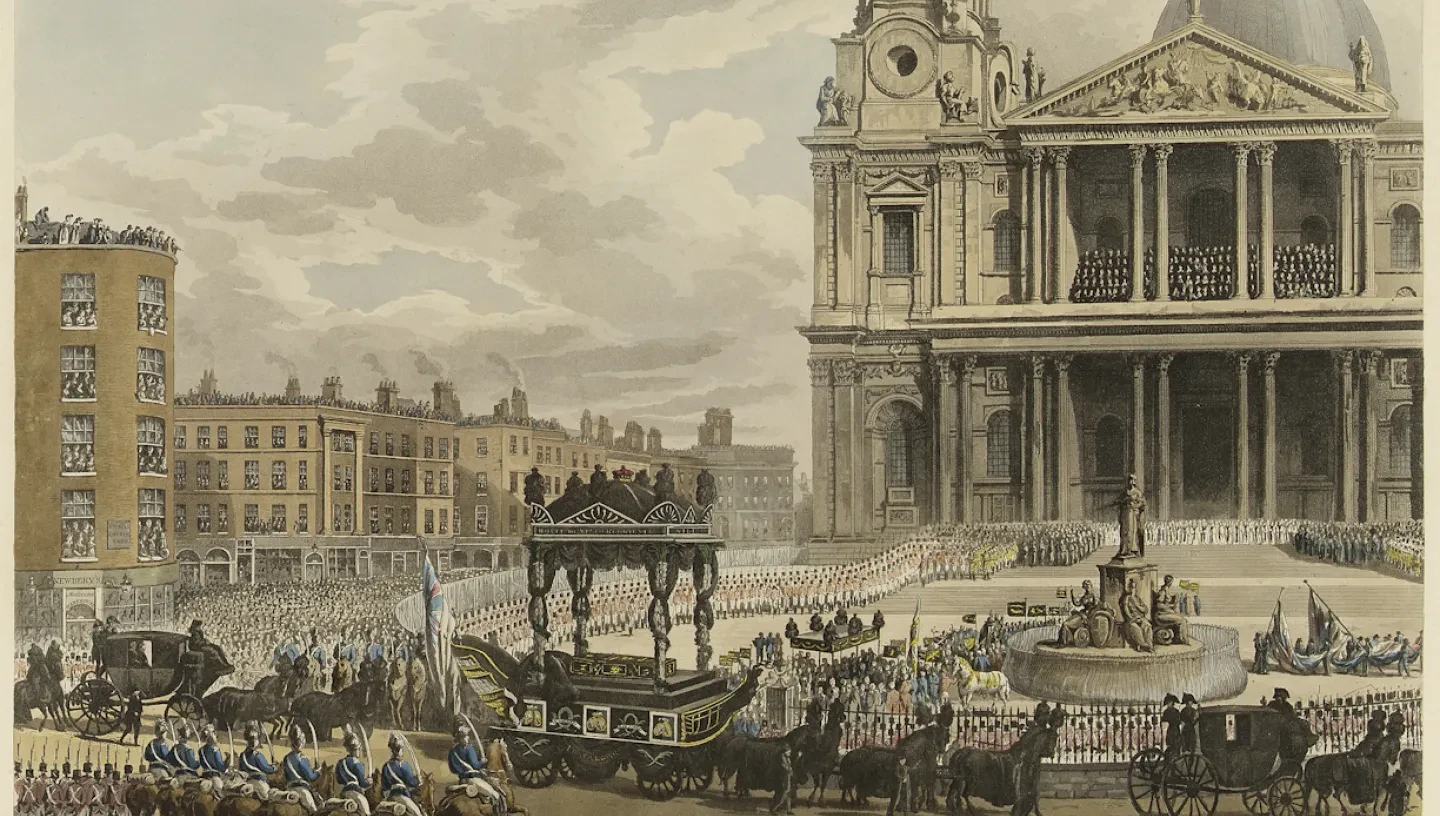
Nelson's funeral
Nelson was shot at the Battle of Trafalgar (1805). His body was brought back to England on board HMS Victory and he was buried at St Paul’s Cathedral.
Lord Nelson’s funeral was the grandest state occasion of the era and lasted over five days. As he had requested, his body was placed in a coffin made from the mast of the French ship, L'Orient, destroyed during his famous victory at the Battle of the Nile. Nelson’s undress coat, which he had been wearing when he was shot, was returned to his lover Emma Hamilton in accordance with his wishes.
Explore more: Sir Isaac Heard, the man who helped the nation mourn Nelson
Funeral at St Paul’s
Arriving at Greenwich on 23 December 1805, his body lay in state in the Painted Hall from 5 to 7 January 1806. More than 15,000 people came to pay their respects and many more were turned away. Nelson's body was then taken from Greenwich up the Thames to Whitehall on 8 January, spending the night before the funeral at the Admiralty. The next day it was placed in a funeral car modelled on the Victory and taken through the streets to St Paul's Cathedral. Sir Peter Parker, Admiral of the Fleet, led the mourners, and members of the Victory’s crew were in the procession.
The service at St Paul's was charged with emotion, marking the passing of the man who had delivered his country from a foreign threat. Thousands watched as Nelson's coffin was lowered down and finally laid to rest in an ornate tomb in the crypt of St Paul’s. The tomb is now surrounded by the graves of many other naval officers. These include the grave of his close friend and second in command at Trafalgar, Vice-Admiral Cuthbert Collingwood.
Every year St Paul’s Cathedral holds a special ‘Sea Service’ on the Sunday closest to Trafalgar Day when wreaths are laid at Nelson’s tomb.
Discover more about Nelson's legacy
Find out more about Nelson at the National Maritime Museum's 'Nelson, Navy, Nation' gallery. Entry to the National Maritime Museum is free, open daily from 10am.

